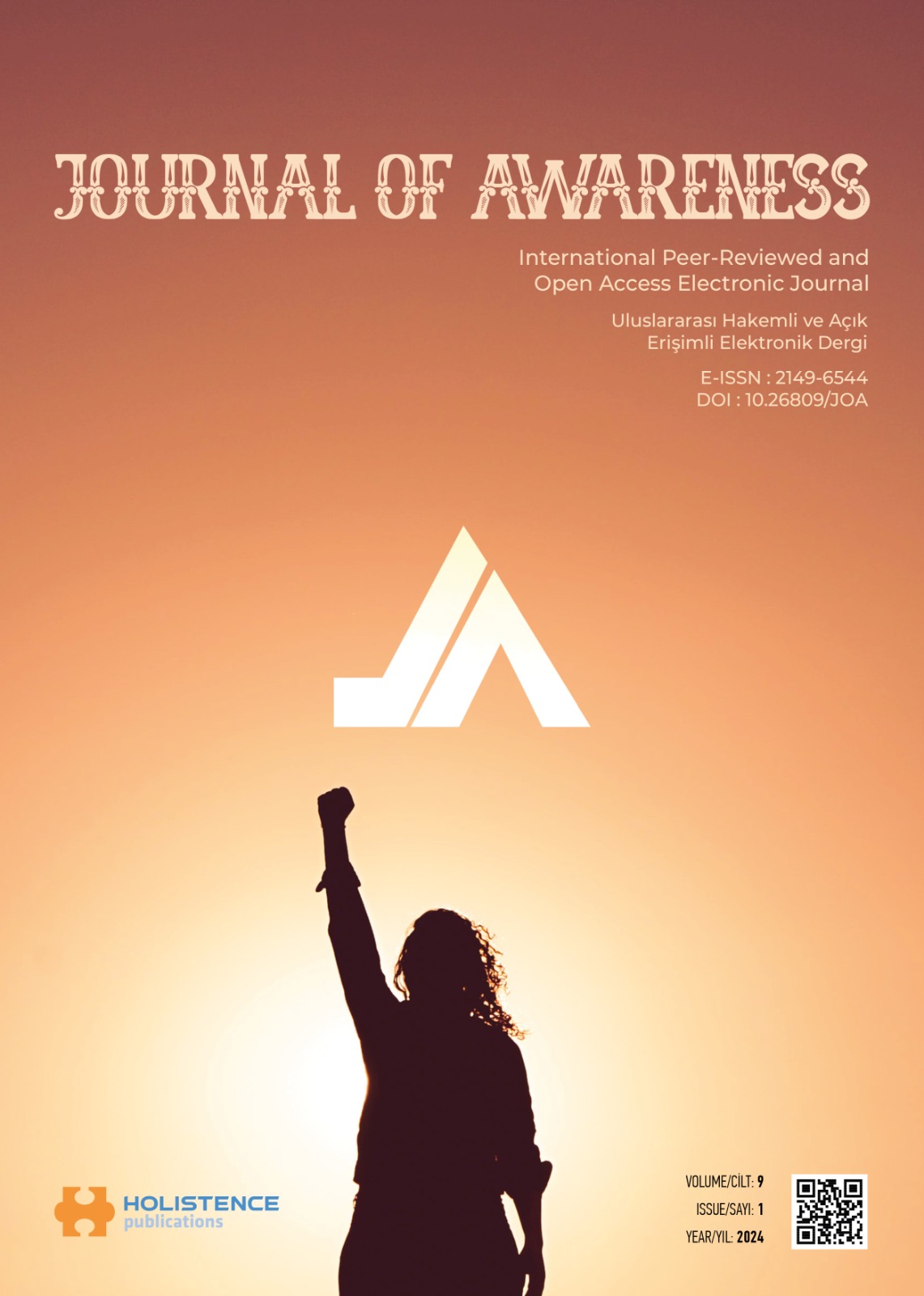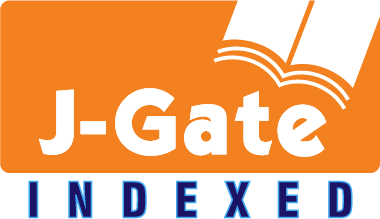Quantum theory and quantum computation
DOI:
https://doi.org/10.26809/joa.2230Keywords:
Quantum computation, quantum information, contextuality, negative wigner functionsAbstract
Quantum theory describes physical reality in a consistent way. It cannot be replaced by a hidden variables theory. Accordingly, in this study, the criteria for quantumness is discussed. Here the contextuality of the observables is of crucial importance. In this manner, known solutions for quantum mechanical computation and information processing is investigated, and the negative Wigner function criterion is mentioned for new problems and new solutions.
Downloads
References
ABRAMSKY, S., BARBOSA, R. S., KISHIDA, K., LAL, R., & MANSFIELD, S. (2013). Contextuality, Cohomology and Paradox, 24th EACSL Annual Conference on Computer Science Logic (CSL 2015) (S. Kreutzer, ed.), vol. 41 of Leibniz International Proceedings in Informatics (LIPIcs), (Dagstuhl, Germany), 211–228, Schloss Dagstuhl–Leibniz- Zentrum fuer Informatik.
ABRAMSKY, S., BARBOSA, R. S. & MANSFIELD, S. (2017). Contextual Fraction as a Measure of Contextuality, Phys. Rev. Lett., 119, 050504.
AHARON, N. & VAIDMAN, L. (2008). Quantum advantages in classically defined tasks, Phys. Rev. A, 77, 052310.
ASPECT, A., DALIBARD, J., & ROGER, G. (1982). Experimental Test of Bell’s Inequalities Using Time-Varying Analyzers, Phys. Rev. Lett., 49, 1804–1807.
ASPECT, A., GRANGIER, P. & ROGER, G. (1982). Experimental Realization of Einstein-Podolsky- Rosen-Bohm Gedankenexperiment: A New Violation of Bell’s Inequalities, Phys. Rev. Lett., 49, 91–94.
BECHMANN-PASQUINUCCI, H. & PERES, A. (2000). Quantum Cryptography with 3-State Systems, Phys. Rev. Lett., 85, 3313–3316.
BELL, J. S. (1964). On the Einstein Podolsky Rosen paradox. Physics Physique Fizika, 1, 195–200,
BELL, J. S. (1966). On the Problem of Hidden Variables in Quantum Mechanics, Rev. Mod. Phys., 38, 447–452.
BELL, J. S. & ASPECT, A. (2004). Speakable and Unspeakable in Quantum Mechanics: Collected Papers on Quantum Philosophy. Cambridge University Press, 2 ed.
BOHM, D. (1951). Quantum Theory. Prentice-Hall, 1 ed.
BOUWMEESTER, D., PAN, J.-W., MATTLE, K., EIBL, M., WEINFURTER, H. & ZEILINGER, A. (1997). Experimental quantum teleportation, Nature, 390(6660), 575–579.
CABELLO, A. (2010). Proposal for Revealing Quantum Nonlocality via Local Contextuality, Phys. Rev. Lett., 104, 220401.
CASE, W. B. (2008). Wigner functions and Weyl transforms for pedestrians, American Journal of Physics, 76, 937–946.
CLAUSER, J. F., HORNE, M. A., SHIMONY, A. & HOLT, R. A. (1969). Proposed Experiment to Test Local Hidden-Variable Theories, Phys. Rev. Lett., 23, 880–884.
DEUTSCH, D. E. (1998). The Fabric of Reality: The Science of Parallel Universes–and Its Implications. Penguin Books, illustrated edition ed.
EINSTEIN, A., PODOLSKY, B., & ROSEN, N. (1935). Can Quantum-Mechanical Description of Physical Reality Be Considered Complete?. Phys. Rev. 47, 777–780.
Electronic Frontier Foundation (2023) [online]. https://www.eff.org, [Erişim Tarihi: 03.09. 2023]
EUCLID (İ.Ö. 300). Euclid’s ‘Elements’ [online]. https://www.claymath.org/library/historical/euclid/, [Erişim Tarihi: 03.09. 2023]
EUCLID (İ.Ö. 300). Euclid’s ‘Elements’ [online]. https://www.loc.gov/item/2021667076/ , [Erişim Tarihi: 03.09. 2023]
FREMBS, M., ROBERTS, S. & BARTLETT, S. D. (2018). Contextuality as a resource for measurement-based quantum computation beyond qubits, New Journal of Physics, 20, 103011.
GISIN, N. (1996). Hidden quantum nonlocality revealed by local filters, Physics Letters A, 210, no. 3, 151–156.
GLEASON, A. M. (1957). Measures on the Closed Subspaces of a Hilbert Space, Journal of Mathematics and Mechanics, 210(3), 885–893.
GROSS, D. & EISERT, J. (2007). Novel Schemes for Measurement-Based Quantum Computation, Phys. Rev. Lett., 98, 220503.
GRUDKA, A., HORODECKI, K., HORODECKI, M., HORODECKI, P., HORODECKI, R., JOSHI, P., KLOBUS, W. & WOJCIK, A. (2014). Quantifying Contextuality, Phys. Rev. Lett., 112, 120401.
HEISENBERG, W. (1925). Über quantentheoretische Umdeutung kinematischer und mechanischer Beziehungen, Zeitschrift für Physik, 33( 1), 879–893.
HEYWOOD, P. & REDHEAD, M. L. G. (1983). Nonlocality and the Kochen-Specker paradox, Foundations of Physics, 13( 5), 481–499.
JAUCH, J. M. & PIRON, C. (1963). Can hidden variables be excluded in quantum mechanics?, Helvetica Physica Acta, 36, p827–837.
KLEINMANN, M., GÜHNE, O., PORTILLO, J. R., LARSSON, J. Åke & CABELLO, A. (2011). Memory cost of quantum contextuality, New Journal of Physics, 13, 113011.
KOCHEN, S. B. & SPECKER, E. P. (1967). The Problem of Hidden Variables in Quantum Mechanics, Journal of Mathematics and Mechanics, vol. 17( 1), 59–87.
KUJALA, J. V. & DZHAFAROV, E. N. (2019). Measures of contextuality and non-contextuality, Phil. Trans. R. Soc. A., 377, 2019.0149
MA, X.-S., HERBST, T., SCHEIDL, T., WANG, D., KROPATSCHEK, S., NAYLOR, W., WITTMANN, B., MECH, A., KOFLER, J., ANISIMOVA, E., MAKAROV, V., JENNEWEIN, T., URSIN, R., & ZEILINGER, A. (2012). Quantum teleportation over 143 kilometres using active feed-forward, Nature, 489 (7415), 269– 273.
MARI, A. & EISERT, J. (2012). Positive Wigner Functions Render Classical Simulation of Quantum Computation Efficient, Phys. Rev. Lett., 109, 230503.
MONTANARO, A. (2016), Quantum algorithms: an overview, npj Quantum Information, 2, 15023,
NOBEL KOMİTESİ (2022). ‘2022 Nobel Fizik Ödülü, “Bell eşitsizliklerinin ihlalini ortaya koymaları ve kuantum bilgi bilimine öncülük etmeleri nedeniyle dolaşık fotonlarla yapılan deneyler için” Alain Aspect, John F. Clauser ve Anton Zeilinger’e ortaklaşa verilmiştir.”’, https://www.nobelprize.org/prizes/physics/2022/summary/ .
PAN, J.-W., BOUWMEESTER, D., WEINFURTER, H. & ZEILINGER, A. (1998). Experimental Entanglement Swapping: Entangling Photons That Never Interacted, Phys. Rev. Lett., 80, 3891– 3894.
PAN, J.-W., GASPARONI, S., ASPELMEYER, M., JENNEWEIN, T. & ZEILINGER, A. (2003). Experimental realization of freely propagating teleported qubits, Nature, 421(6924), 721–725.
PLANCK, M. (1900). Zur Theorie des Gesetzes der Energieverteilung im Normalspectrum. Verhandlungen der Deutschen Physikalischen Gesellschaft im Jahre 1900. Zweiter Jahrgang, 237–245,
POPESCU, S. (2023) Non Locality [online]. http://www.sandupopescu.com/more [Erişim Tarihi: 03.09.2023]
POPESCU, S. & ROHRLICH, D. (1994). Quantum nonlocality as an axiom, Foundations of Physics, 24(3), 379–385.
RAUSSENDORF, R. (2013). Contextuality in measurement-based quantum computation, Phys. Rev. A, 88, 022322.
RAUSSENDORF, R. & BRIEGEL, H. J. (2001). A One-Way Quantum Computer, Phys. Rev. Lett., 86, 5188–5191.
SAKURAI, J. J. & NAPOLITANO, J. (2017). Modern Quantum Mechanics. Cambridge University Press, 2 ed.
SCHRÖDINGER, E. (1935). Die gegenwärtige Situation in der Quantenmechanik, Naturwissenschaften, 23, no. 48, 807–812.
SERTÖZ, A.S. (2019) Öklid’in Elemanları: Ciltli. TÜBİTAK Popüler Bilim Kitapları, TÜBİTAK.
SHOR, P.W. (1994). Algorithms for quantum computation: discrete logarithms and factoring. Proceedings 35th Annual Symposium on Foundations of Computer Science, 124–134.
SPECKER, E. (1960). Die Logik Nicht Gleichzeitg Entscheidbarer Aussagen, Dialectica, 14(2-3), 239–246.
SPEKKENS, R. W. (2008). Negativity and Contextuality are Equivalent Notions of Nonclassicality, Phys. Rev. Lett., 101, 020401.
STAPP, H. P. (1975). Bell’s theorem and world process, Il Nuovo Cimento B (1971-1996), 29(2), 270–276.
SVOZIL, K. (2009). Three criteria for quantum random-number generators based on beam splitters, Phys. Rev. A, 79, 054306.
SVOZIL, K. (2012). How much contextuality?, Natural Computing, 11( 2), 261–265.
WAEGELL, M., & ARAVIND, P. (2013). GHZ paradoxes based on an even number of qubits., Physics Letters A, 377( 7), 546–549.
ŻUKOWSKI, M., ZEILINGER, A., HORNE, M. A. & EKERT, A. K., (1993). ’Event-ready-detectors’ Bell experiment via entanglement swapping, Phys. Rev. Lett., 71, 4287–4290.
Downloads
Published
How to Cite
Issue
Section
License
Copyright (c) 2024 Holistence Publications

This work is licensed under a Creative Commons Attribution 4.0 International License.
When the article is accepted for publication in the Journal of Awareness, authors transfer all copyright in the article to the Rating Academy Ar-Ge Yazılım Yayıncılık Eğitim Danışmanlık ve Organizasyon Ticaret Ltd. Şti.The authors reserve all proprietary right other than copyright, such as patent rights.
Everyone who is listed as an author in this article should have made a substantial, direct, intellectual contribution to the work and should take public responsibility for it.
This paper contains works that have not previously published or not under consideration for publication in other journals.











